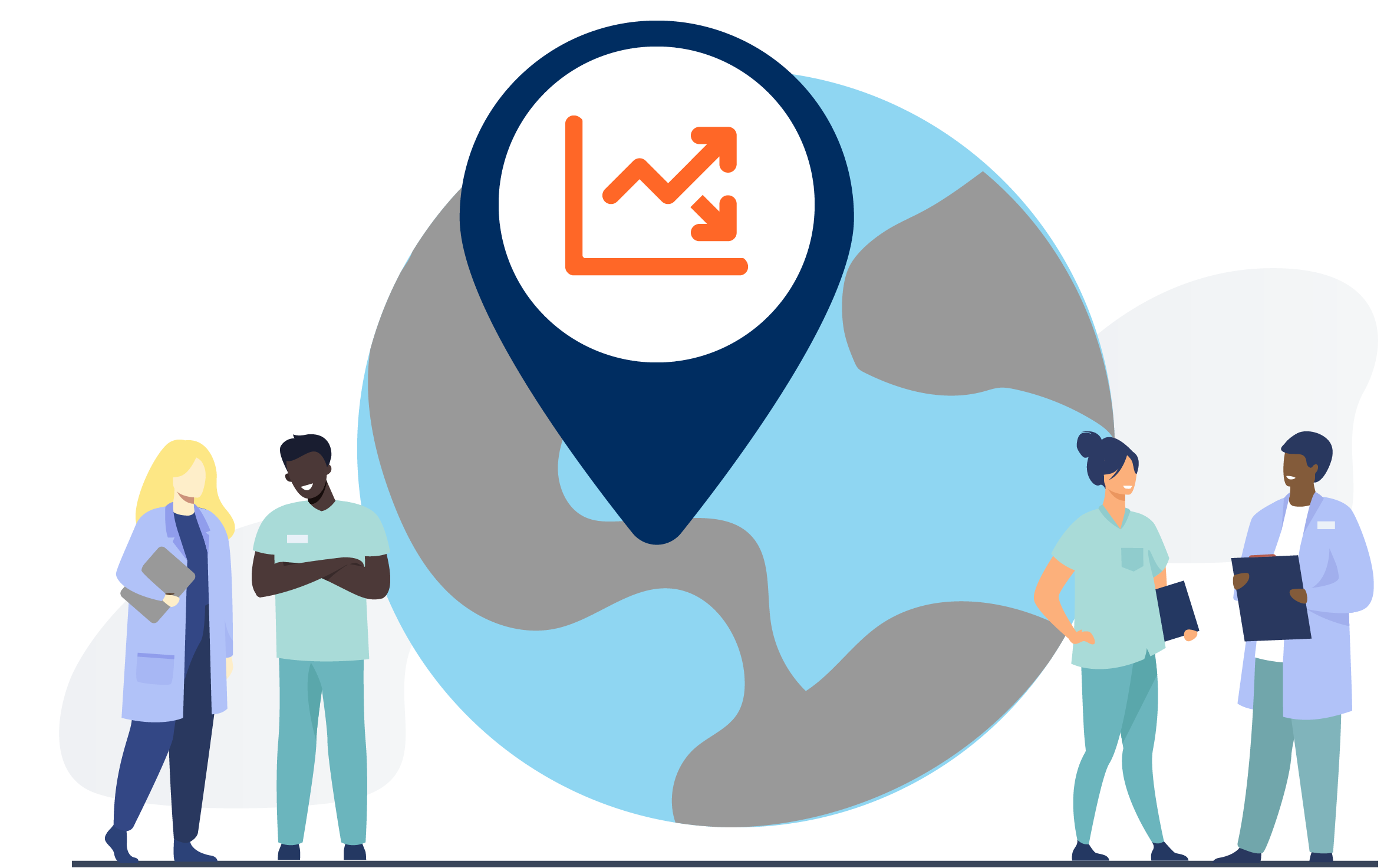With improvements in survival to adulthood, improved economic and political states, and development of global markets of food and products has come changes to human behavior, exposure, and risks. As morbidity and mortality from communicable diseases has fallen, death from cardiovascular diseases and cancer have become the most common causes of death of adults in every region. And in areas with developing infrastructure and variable safety and quality controls, accidents and injuries remain an important cause of disability and death around the world across the adolescent and adult ranges. Lastly, mental health is a growing concern around the world, with significant disability burden from depression, anxiety, and substance-use disorders that has had little attention until recent years in terms of prioritization for funding and policy.
For most of these non-communicable diseases, there are important behavioral changes that can prevent disease/premature death (as if behavioral change was an easy thing to accomplish for patients!). All of them require access to healthcare services that include early diagnosis and access to treatment, which could mean regular access to long-term medication for disease control (such as hypertension), access to expensive medication (like chemotherapy), or access to trained surgeons (for example, trauma) and the ancillary services required for surgery (such as anesthesia, OR, sterile equipment, etc). As you can imagine, there are many complex barriers to strengthening health systems around the world toward these goals.
While these are grouped into “non-communicable diseases,” there are multiple distinct topics. For this module, there are three areas of focus:
-
- Diseases with modifiable risk factors (primarily cardiovascular and chronic respiratory disease)
- Mental health and disorders
- Global surgery.
1
Note
You are encouraged to read/watch/listen to all of the assigned material, but you are only required to select one of the areas to respond to discussion questions. If you have time and interest, you are welcome to do more.
Learning objectives
- Describe the most important risk factors for, contributing determinants, and the burden of non-communicable diseases worldwide
- For the country of interest, explore topics of cardiovascular disease, mental health, and surgical services as it relates to noncommunicable diseases
- Discuss measures that can be taken to address the burden of these conditions in cost-effective and fair ways in low and middle-income countries
Non-communicable diseases and modifiable risk factors
- Read
- Watch
- Reflect
- More
- Global Health 101, Chapter 14: Non communicable diseases and mental Health.
- Hunter DJ, Reddy KS. Noncommunicable diseases. N Engl J Med. 2013;369(14):1336–1343.
- Bollyky TJ, Templin T, Cohen M, Dieleman JL. Lower-income countries that face the most rapid shift in noncommunicable disease burden are also the least prepared. Health Aff (Millwood). 2017;36(11):1866–1875.
- Decreasing Global Noncommunicable Disease by Reducing Risky Behaviors. Sonia Angell MD, MPH. Yale Grand Rounds.
(Choose one topic.)
On the Slack discussion board:
- For country of interest:
To explore these topics, in addition to the data sources you have encountered so far, consider using social media, news outlets, or other content that persons in that country may be likely to interact with.
-
- What is the diet like—how does it differ between the affluent vs impoverished in the area?
- How much of the diet is high in trans fat, sodium, or highly-processed products?
- Select one of the major NCDs (Cardiac disease, Diabetes, Cancer) and explore the state of diagnosis, access to care and medications, screening, or prevention efforts.
- Is there evidence of policies aimed at improving burden of disease around NCDs? Is it a "package" of evidence-based interventions and what sectors are represented in the interventions (as described in Dr. Angell's presentation/Yale Grand Rounds)?
- What messages or norms are in the community around food, tobacco, or EtOH?
- What terms are used in this community for cardiac disease, hypertension, diabetes? Are there idioms used in the language that might be new to you?
Non-communicable diseases: Mental health
- Read
- Watch
- Do
- Listen
- Explore
- More
- Patel V, et al. The Lancet Commission on global mental health and sustainable development. Lancet. 2018 Oct 27;392(10157):1553–1598. doi: 10.1016/S0140-6736(18)31612-X. Epub 2018 Oct 9. Erratum in: Lancet. 2018 Oct 27;392(10157):1518. PMID: 30314863.
- Patel V, Flisher AJ, Hetrick S, McGorry P. Mental health of young people: a global public-health challenge. Lancet. 2007;369(9569):1302–1313. doi:10.1016/S0140- 6736(07)60368-7
-
Mental Health for All by Involving All. Ted.com.
(Choose one discussion topic.)
On the Slack discussion board:
- Consider the World Happiness Report and Happiness Index and share your thoughts:
-
-
How might you explain the different indices between high-income countries and low-income countries?
-
How might you explain difference within income designations?
-
What are relevant factors in a population that contribute to happiness? How many of those factors would be relevant to mental health disorders; how might those factors affect a persons' experience with mental health or a health systems' approach to diagnosis and treatment of mental health disorders?
-
-
For country of interest, explore social media, news outlets, and other available material. How is mental health discussed, portrayed, and/or being addressed?
Podcast: The Global Cause of Mental Health
- This podcast interviews two experts who have devoted their lives to global mental health. Vikram Patel, MD, is a professor of global health at the Harvard University Chan School of Public Health (same as the above TED talks and two cited articles). In April 2015, he was listed as one of the world’s 100 most influential people by TIME magazine. Fran Silvestri has been the director of the International Institute of Mental Health Leadership since the organization’s inception 20 years ago.
Explore the World Happiness Report and Happiness Index. While the measure of 'happiness' is not equivalent to the absence of mental disorders/disease, it is useful to think about how this study on the happiness index differs around the world: How do we explain the differences?
- Baheretibeb Y, Wondimagegn D, Law S. Holy water and biomedicine: a descriptive study of active collaboration between religious traditional healers and biomedical psychiatry in Ethiopia. BJPsych Open. 2021 May 5;7(3):e92. doi: 10.1192/bjo.2021.56. PMID: 33947496; PMCID: PMC8142542.
- Akol A, Moland KM, Babirye JN, Engebretsen IMS. "We are like co-wives": Traditional healers' views on collaborating with the formal Child and Adolescent Mental Health System in Uganda. BMC Health Serv Res. 2018 Apr 10;18(1):258. doi: 10.1186/s12913-018-3063-4. PMID: 29631632; PMCID: PMC5892042.
- WHO Mental Health Gap Action Programme.
- Mental Health Innovation Network.
- Explore several innovative projects around the world addressing mental health from a community-based perspective.
Non-communicable diseases: Global surgery
- Read
- Watch
- Do
- More
- Bath M, Bashford T, Fitzgerald JE. What is 'global surgery'? Defining the multidisciplinary interface between surgery, anaesthesia and public health. BMJ Glob Health. 2019;4(5):e001808. Published 2019 Oct 30. doi:10.1136/bmjgh-2019-001808
- Global Surgery 2030: Evidence and solutions for achieving health, welfare, and economic development.
- This landmark document produced by the Lancet Commission for Global Surgery in 2015, is an excellent and comprehensive overview of the current state and future directions of global surgery. It is a must read for anyone with any interest in global surgery.
- Global Surgery: A drive to improve access to surgery in Africa. Salome Maswime TEDx.
- Global Surgery: A Brief Primer.
- This video lecture provides an overview of global surgery, including key points from the Lancet Commission on Global Surgery and individual case studies. Developed and presented by Vanderbilt University Global Health student Shayan Rakhit.
- Solving the Global Anesthesia Crisis.
On the Slack discussion board:
-
Choose one discussion topic for country of interest:
-
- What are surgical services like?
- How many surgeons are there?
- How many anesthesiologists?
- Are there surgical training programs in-country or are surgeons trained elsewhere?
- Are there NGOs or Global health programs from high-income countries?
- What is the scope of the work done?
- What sources fund the work?
- What are relationships between the organization and local leadership?
- Are outcomes measured and reported—how and to whom?
- Nagengast ES et al. Providing more than health care: the dynamics of humanitarian surgery efforts on the local microeconomy. J Craniofac Surg. 2014;25(5):1622–1625. doi:10.1097/SCS.0000000000001133
- Farmer PE, Kim JY. Surgery and global health: a view from beyond the OR. World J Surg. 2008;32(4):533–536. doi:10.1007/s00268-008-9525-9
- Faught W, Gill R, Ng-Kamstra J. Women’s health and surgical care: Moving from maternal health to comprehensive surgical systems. J Obstet Gynaecol Can 2015;37(10):894–896.
- White MC, Barki BJ, Lerma SA, Couch SK, Alcorn D, Gillerman RG. A Prospective Observational Study of Anesthesia-Related Adverse Events and Postoperative Complications Occurring During a Surgical Mission in Madagascar. Anesth Analg. 2018;127(2):506-512. doi:10.1213/ANE.0000000000003512

